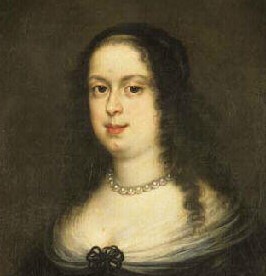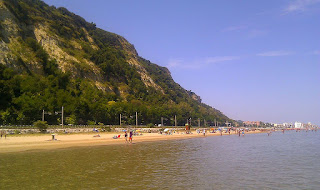Won five Grand Slam doubles titles with partner Sara Errani
 |
Roberta Vinci won 10 singles and 25 doubles titles in her
career, reaching a Grand Slam singles final at the age of 32 |
The tennis player Roberta Vinci, one half of the most successful Italian women’s doubles partnerships of all time and one of only four Italian women to rank in the world’s top 10 at singles, was born on this day in 1983 in the major port city of Taranto in Puglia.
Vinci and partner
Sara Errani reached the women’s doubles final at eight Grand Slam tournaments between 2012 and 2014, winning five of them.
They were the champions at the
French Open and
United States Open in 2012 and the
Australian Open in 2013 and again in 2014. When they won the
Wimbledon title in 2014 they became one of only five women’s doubles partnerships to complete a career Grand Slam of all the four majors.
The pair, who reached No 1 in the world rankings in 2012, unexpectedly ended their five-year partnership in 2015, after which Vinci focussed on singles.
 |
Vinci and her doubles partner Sara Errani,
with whom she won five Grand Slams |
Vinci’s finest achievement in singles came at the
US Open in 2015, when she defeated world No 1 Serena Williams in the semi-finals before facing her compatriot and childhood friend
Flavia Pennetta in the final, the first in a Grand Slam in the open era to pit one Italian against another.
Pennetta won 7-6, 6-2 but Vinci was spurred on by her achievement in reaching a Grand Slam final for the first time at 32 years old and in 2016 broke into the world’s top 10 for the first time in her career at 33 years and four days. It is the oldest at which any player has attained a top-10 ranking for the first time.
She did so on the back of winning a WTA tournament in St Petersburg, Russia, her first for three years. Errani, Pennetta and
Francesca Schiavone are the other Italian women who have achieved a ranking in the top 10.
The daughter of an accountant, Vinci took up tennis at the age of just six and represented Taranto Tennis Club in numerous junior events. She and Pennetta, from Brindisi, won the women’s doubles at the Avvenire Trophy at just 14 years old.
They won the girls’ doubles at the French Open in 1999, the same year that Vinci made her professional debut.
 |
Vinci and Flavia Pennetta show off their trophies after the
US Open women's final of 2015 in New York |
The first of her 35 titles came in 2001 at the Qatar Open, when she and the French player Sandrine Testud won the women’s doubles. In all she went on to win 25 doubles titles, all but three in partnership with Errani.
Vinci won the first of her 10 singles titles at the Copa Colsanitas in Bogota, Colombia, in 2007. She was also a member of the Italian team that won the
Fed Cup women’s team event on four occasions.
Unusually for a modern player, Vinci used a one-handed backhand grip and the backhand slice was one of her favourite shots. Combined with a powerful forehand and excellent court coverage, her game was often likened to that of the great German champion Steffi Graf.
After a 21-year career, Vinci retired from professional tennis at the Italian Open in 2018, bowing out before an appreciative home crowd at the
Foro Italico in Rome, signing off a tearful farewell speech with the words: “From tomorrow, I am on holiday!”
 |
Taranto's Castello Aragonese, which stands guard over
the canal linking the Mar Grande with the Mar Piccolo |
Travel tip:
Taranto, a port city on the Ionian Sea which is home to Italy’s largest naval base, was once one of the largest cities in the world, founded by the Greeks in 706BC and growing so prosperous that it once had a population in excess of 300,000. It retained its status under the Roman Republic but declined under the Roman Empire after the Emperor Trajan redirected the Via Appia, which used to connect it with Rome, to Bari. Nowadays, it is still a substantial city, home to almost 200,000 people. It is built around two large bays - the Mar Grande, where the commercial port is located, and the Mar Piccolo, flanked by the historic town centre and also home to the city’s fishing fleets. The city is notable for multiple architectural styles, including Byzantine, Saracen and Norman. The Cattedrale di San Cataldo, right in the heart of old Taranto, dates back to the 11th century and houses the relics of the city’s patron saint, Cataldo. Taranto’s other must-see monument is the Castello Aragonese, built by King Ferdinand of Aragon in the 15th century.
 |
The uniquely ornate setting of Italy's national tennis centre
at the Foro Italico, home of the Italian Open |
Travel tip:
Foro Italico, the sports complex in Rome that is the home of the Italian Open tennis championships, was built between 1928 and 1938 as the Foro Mussolini. Inspired by the Roman forums of the imperial age, its original purpose was to host the Olympic Games of 1940 as a showcase for Fascist values. In the event, the Second World War meant the 1940 Games were cancelled, although it was the main host venue for the Rome Olympics of 1960. The complex of today includes the Stadio Olimpico, home of Rome’s two major football clubs - Roma and Lazio - and the largest sports stadium in Italy, the ornate Stadio dei Marmi athletics stadium - headquarters of the Italian National Olympic Committee - and the national tennis centre, which - like the Stadio dei Marmi is surrounded by classical statues of athletes.
More reading:
Why Sara Errani can be called Italy's most successful tennis player of all time
Francesca Schiavone - the first Italian woman to win a Grand Slam
How Camila Giorgi became Italy's No 1
Also on this day:
1455: The death of Renaissance painter Fra Angelico
1564: The death of Michelangelo
1967: The birth of soccer star Roberto Baggio
(Picture credits: Main picture of Roberta Vinci by Regasterios; Vinci and Errani by Marianne Bevis; Castello Aragonese by Livioandronico2013; all via Wikimedia Commons)
Home


























